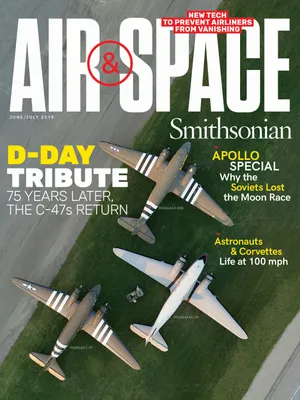My Wingman is an AI
And his name is Skyborg.
:focal(2133x1121:2134x1122)/https://tf-cmsv2-smithsonianmag-media.s3.amazonaws.com/filer/6e/67/6e67c91c-c06d-4334-9963-01da20335f22/32b_jj2019_xq58ainauguralflight_live.jpg)
The U.S. Air Force is not lacking for colorful call signs—just ask the pilots known as Ratdog, Nails, and Squidbait, to name a few.
Soon pilots may have a wingman with an equally memorable name: Skyborg, an autonomous AI under development at the Air Force Research Lab.
At a press conference in Washington, D.C., this past March, Will Roper, the Air Force’s assistant secretary for acquisition, technology, and logistics, likened Skyborg to Star Wars’ R2-D2—Luke Skywalker’s robotic sidekick on his X-Wing fighter.
The goal, Roper emphasized, is not to replace pilots, but to provide critical support that will enhance their warfighting capabilities: “We’re going to ask them to do even more, which is not just to fly a wicked fast, lethal plane. We’re going to ask them to fly that plane and then quarterback a team of planes with them. I think it’s going to make being a pilot more exciting.”
Skyborg would train and learn alongside its human pilot. The Air Force is eyeing a list of unmanned vehicles as candidates for housing the AI, including variations of one of the BQM target drones or the XQ-58A Valkyrie, a long-range unmanned vehicle capable of flying close to the speed of sound that completed a 76-minute maiden flight in early March.
As it learns and proves itself in combat situations, Skyborg might also be embedded in a pilot’s cockpit, as a co-pilot responding to voice commands. Skyborg might one day be capable of performing multiple tasks, such as target recognition, navigation, and weapons deployment.
